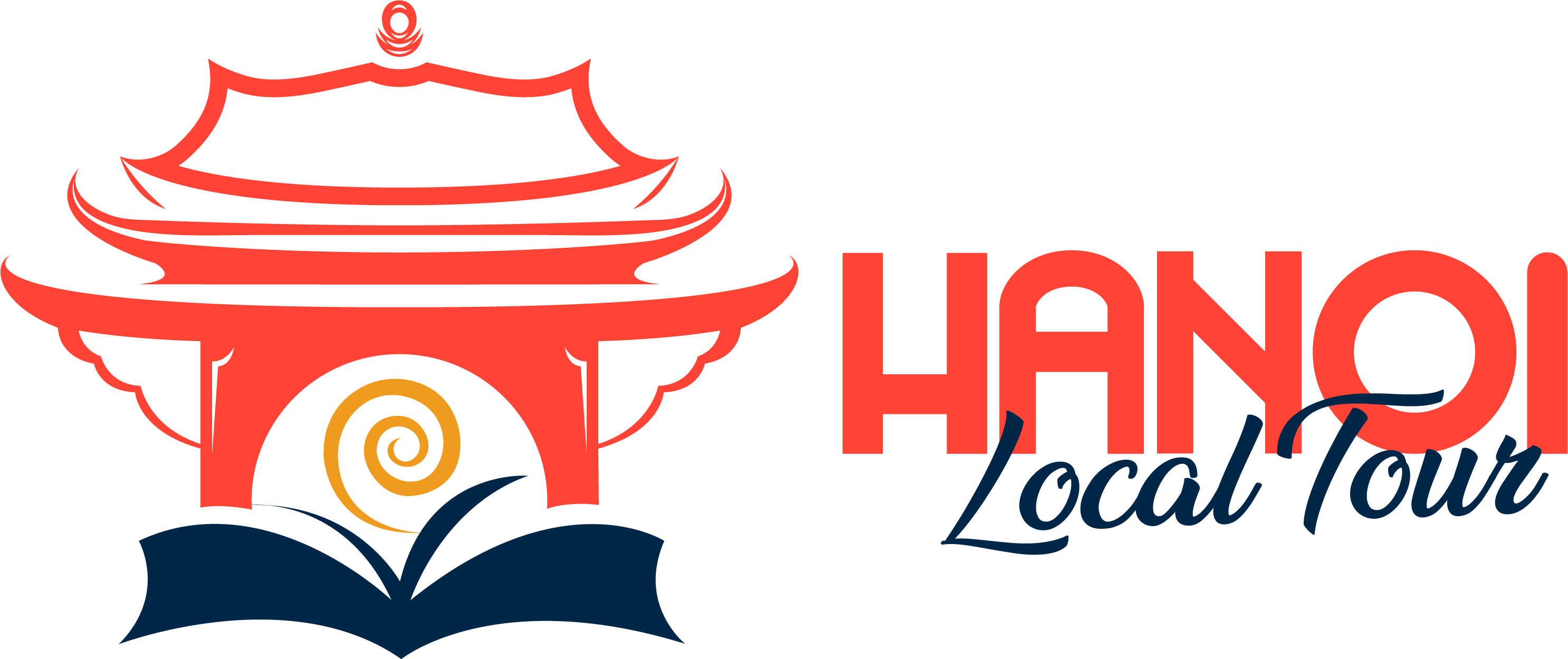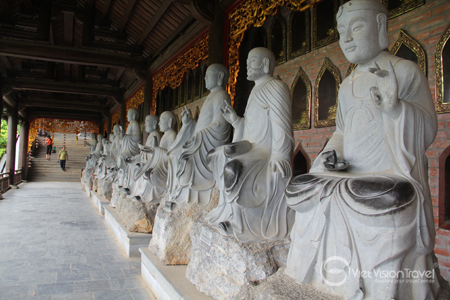For a long time, Vietnam has adopted and selected the culture of different countries coming to Vietnam. Therein, Buddhism is probably the earliest and the oldest religion introduced into Vietnam. As a result, spiritual tourism with the aim of exploring the beauty of religious culture is always the most attractive thing for travelers to Vietnam, especially the trips around Hanoi. About 100 km from Hanoi, Bai Dinh Pagoda in Ninh Binh province is one of the most popular destinations of the north in particular and of Vietnam in general.
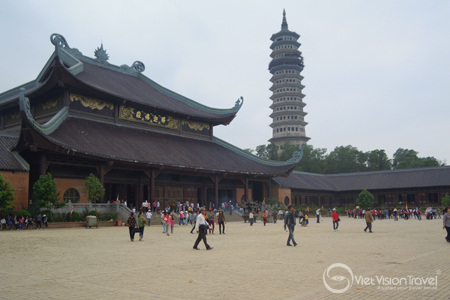
Bai Dinh Pagoda is located in Trang An complex landscape, about 15km from Ninh Binh city. Referring to Bai Dinh Pagoda, it not just mentions to a single temple. Bai Dinh Pagoda is a complex consisting of an ancient pagoda and a new pagoda built in 2003. Bai Dinh Pagoda is situated on the slopes of the quiet scenery in the vast area with rocky mountain and lakes surrounding and overlooking the west is Hoa Lu Ancient Capital. The overall area of Bai Dinh pagoda is more than 500 hectares with many large-scale items, therefore, Bai Dinh is considered the largest pagoda complex in Southeast Asia. Bai Dinh pagoda is in massive and majestic style but still deeply brings identities of Vietnamese tradition, and is the spiritual continuation of thousands of years ago until today. Arrive the pagoda, visitors will admire the vast space of the pagoda complex here, which is considered the biggest spiritual destinations in Vietnam.
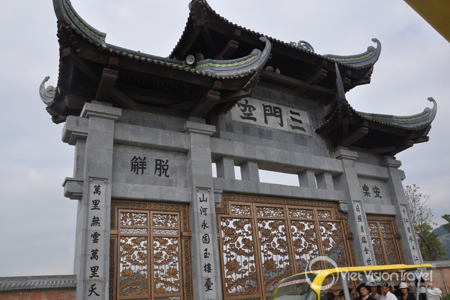
Upon arrival of the new pagoda, guests will be impressed by the huge Tam Quan gate (Three Gates), the main entrance of Bai Dinh Pagoda built with massive scale with three roofs covered with terracotta tiles of Bat Trang ceramic village. The right and the left of Tam Quan gate are associated with 2 corridors of Arhat. At Tam Quan gate, there are two statues of kind and evil; two statues are cast in bronze, each weighing about 12 tons, the heaviest statues of kind and evil in Vietnam. Go along the corridor of Arhat, visitors will see a lot of Arhat statues bearing different facial expressions and appearances representing the various emotions of humans.
From Arhat corridors, visitors will go to the bell tower, a place keeping Vietnam's the largest bell. The bell weighs 36 tons with motifs and two texts of orison in Chinese and Vietnamese. The sophisticated carving features carrying the typical characteristics of Buddhist art are shown on the bells in a unique way.
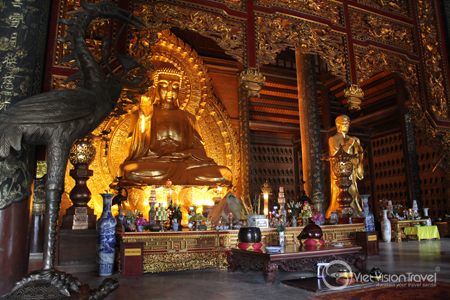
Leaving the bell tower, tourists go to the palace of Bodhisattva; it was built entirely by wood, straight pillars in large diameter, and the entire architecture of the palace was built in ancient Vietnamese style with the traditional type of roof. The palace has five spaces, the middle space is the longest and widest and the gilt bronze statue of Bodhisattva having a thousand of eyes and a thousand of hands sitting on a lotus and dragon head is placed in here.
Continuing the journey to Phap Chu palace, the place of worship Buddha Sakyamuni - the founder of Buddhism. Phap Chu palace was built according to the architectural style of Tam The pagoda with two layers of curved roof associated with the lake in front. In the sanctuary, Sakyamuni statue sits majestically on a lotus, the Buddha's hand holds a lotus flower standing for Buddha intellect according to the conception of solemn appearance. The middle of the Buddha's chest is carved swastika (卐 or 卍) symbolizing the wisdom and mercy as well as the infinite power and endless expansion to bless the people of Buddha. It is also a shrine to worship the Buddhist relics (pearls) of Buddha and Saint. Located in the highest position in the pagoda complex is the palace of Tam The. This is the highest and the most massive court, therefore, standing from here visitors can see the whole picture of Bai Dinh Pagoda. In the palace, there are three gilt bronze statues. Because three Buddhists represents the three Buddha in the three lives, the past, present, and future, they are situated in the highest place. From Tam The palace, visitors continue going to the statue of Maitreya Buddha, people often come here to wish good luck and peace to the family.
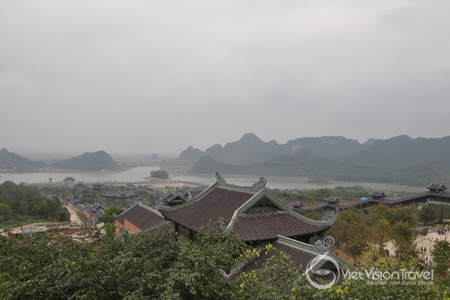
Next to the new pagoda is an ancient pagoda. It is said that not going to the ancient pagoda is not considered having come to Bai Dinh. Visitors must climb 300 stone steps to the pagoda, but the feeling of being breathed in the natural air here is very comfortable. The old pagoda’s entrance also has two bronze statues of kind and evil.
Come to the ancient pagoda, visitors will feel the sacred and quiet atmosphere of a Buddhism place. Turning to the right is Sang (Light) Cave worshipping Buddha, from here you can be amazed by the panoramic view of the beautiful scene of hills and mountains. Turning to the left is the shrine of Saint Nguyen, and coming to the Toi (Dark) Cave worshipping the Mother Goddess, Mother of the highlands. Leaving the ancient pagoda, visitors will go down the mountain to visit the Jade well. Legend said that the old Zen master Nguyen Minh Khong usually got water at the well to cook medications in order to cure for people in the area, and for King Ly Than Tong. The Jade well is built under the moon image and it is very large and beautiful, the water in the well has never dried.
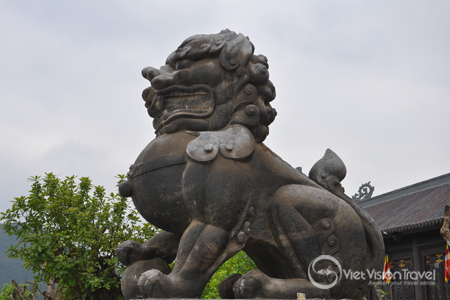
To visit the temple, visitors will get a sense of stillness in the soul, get rid of the noisy and bustling air of busy life in urban places. Bai Dinh Pagoda Complex is the ideal destination for tourists since it is not only the place of gathering the cultural values but also preserves exquisite sculptures expressing the unique architecture of Vietnam.
